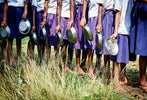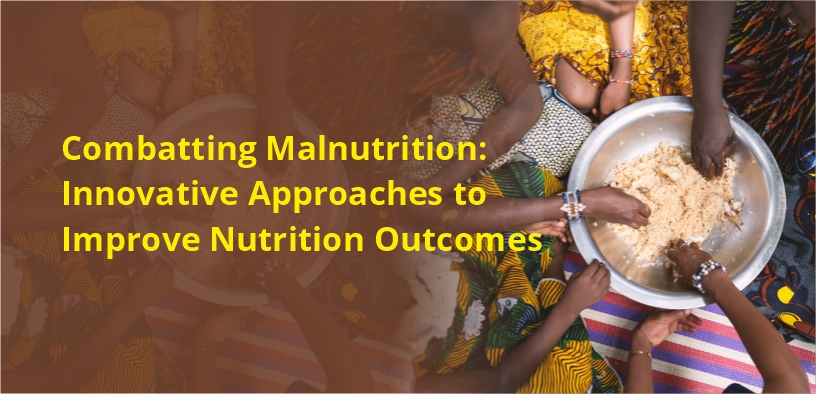
Malnutrition in India: A Persistent Challenge and Pathways to Solutions
, by Samir Padhan, 8 min reading time

, by Samir Padhan, 8 min reading time

Malnutrition is not merely a lack of food; it is a deficiency, excess, or imbalance in a person’s intake of energy and nutrients. It manifests in various forms:
Undernutrition: This includes wasting (low weight for height), stunting (low height for age), and underweight (low weight for age). Undernutrition is prevalent among children and is often linked to poor maternal health, inadequate breastfeeding, and insufficient nutrient intake.
Micronutrient Deficiency: Often referred to as “hidden hunger,” this occurs when essential vitamins and minerals like iron, vitamin A, and iodine are insufficient in the diet. Micronutrient deficiencies can lead to severe health issues, including anemia, impaired cognitive development, and increased susceptibility to infections.
Overnutrition: Although often overlooked, overnutrition, characterized by overweight and obesity, is an emerging problem in India. It can lead to chronic diseases such as diabetes, hypertension, and cardiovascular issues.

India’s malnutrition burden is staggering, particularly among children and women. According to the National Family Health Survey (NFHS-5) conducted in 2019-2021:

Malnutrition in India is a complex issue influenced by multiple factors:
Poverty and Economic Inequality: Despite economic growth, a significant portion of India’s population lives in poverty. Limited access to nutritious food, healthcare, and clean water contributes to malnutrition.
Inadequate Maternal Health: Poor maternal nutrition and health care during pregnancy can lead to low birth weight and malnutrition in newborns.
Inadequate Infant and Young Child Feeding Practices: Early initiation of breastfeeding, exclusive breastfeeding for the first six months, and appropriate complementary feeding are crucial for preventing malnutrition. However, these practices are not widespread in India.
Food Insecurity: In many regions, food production is seasonal, and families face food shortages during certain times of the year. This contributes to inconsistent nutrient intake.
Sanitation and Hygiene: Poor sanitation and hygiene practices lead to frequent infections, which exacerbate malnutrition by reducing nutrient absorption and increasing nutrient loss.
Education and Awareness: Lack of education, especially among women, about nutrition, health, and hygiene contributes to poor dietary practices.

The Indian government has implemented several programs and policies to address malnutrition:
Integrated Child Development Services (ICDS): Launched in 1975, ICDS provides food, preschool education, and primary healthcare to children under six years of age and their mothers. It is one of the world’s largest early childhood development programs.
Mid-Day Meal Scheme: This program provides free lunches to school children in government and government-aided schools. It aims to improve nutritional levels among children and encourage school attendance.
National Nutrition Mission (Poshan Abhiyaan): Launched in 2018, this mission aims to reduce stunting, undernutrition, anemia, and low birth weight by 2022. It focuses on improving nutrition through convergence with various programs, community participation, and use of technology.
Public Distribution System (PDS): The PDS distributes subsidized food grains to low-income families. However, the effectiveness of the PDS is often limited by issues like inefficiency, corruption, and leakage.
National Health Mission (NHM): NHM focuses on improving healthcare delivery, particularly in rural areas. It includes programs aimed at maternal and child health, immunization, and nutrition.

Millets, often referred to as "nutri-cereals," can play a vital role in combating malnutrition in India. These ancient grains are rich in nutrients, including proteins, fiber, vitamins, and minerals. Some key millets include:
Incorporating millets into the daily diet can address both undernutrition and micronutrient deficiencies. These grains are also drought-resistant, making them a sustainable crop for farmers in India’s arid regions.
Despite various initiatives, several challenges persist in the fight against malnutrition:
Implementation Gaps: There is often a disconnect between policy and practice, with many programs failing to reach the most vulnerable populations.
Infrastructure Deficiencies: Poor infrastructure, especially in rural areas, limits access to healthcare, sanitation, and nutrition services.
Cultural Practices: Traditional dietary practices, while important, sometimes contribute to malnutrition, particularly when they limit the diversity of foods consumed.
Economic Barriers: High food prices, particularly for nutritious foods like fruits, vegetables, and animal products, limit their accessibility for low-income families.
Climate Change: Increasingly erratic weather patterns threaten food security by affecting agricultural productivity, particularly in regions dependent on rain-fed agriculture.
Addressing malnutrition in India requires a multi-faceted approach:
Strengthening Government Programs: Ensuring the effective implementation of government schemes like ICDS, Mid-Day Meal, and Poshan Abhiyaan is critical. This includes improving monitoring and evaluation mechanisms, reducing corruption, and ensuring that services reach the most vulnerable populations.
Promoting Millets and Nutritious Crops: Expanding the cultivation and consumption of millets can help address both malnutrition and food security. Government policies should support millet farming, including through subsidies and public awareness campaigns about the health benefits of millets.
Improving Maternal and Child Health: Programs focusing on maternal nutrition, breastfeeding, and complementary feeding practices must be strengthened. This includes community-based interventions to educate and support mothers.
Enhancing Education and Awareness: Nutrition education should be integrated into school curricula, and community-based education programs should be expanded. This will empower individuals to make informed dietary choices.
Investing in Infrastructure: Improving rural infrastructure, particularly healthcare, sanitation, and access to clean water, is essential for reducing malnutrition. This also includes better storage and transportation facilities to reduce food wastage.
Leveraging Technology: Using technology for monitoring, data collection, and dissemination of information can enhance the effectiveness of nutrition programs. Mobile health initiatives and apps can be particularly effective in rural areas.
Malnutrition in India is a complex and multifaceted challenge that requires a coordinated and sustained effort from the government, civil society, and individuals. While significant progress has been made, much more needs to be done to ensure that every Indian has access to adequate nutrition. Millets, with their rich nutritional profile and sustainability, can play a crucial role in this fight. By strengthening existing programs, promoting nutritious crops, and improving education and infrastructure, India can overcome the challenge of malnutrition and ensure a healthier future for all its citizens.


